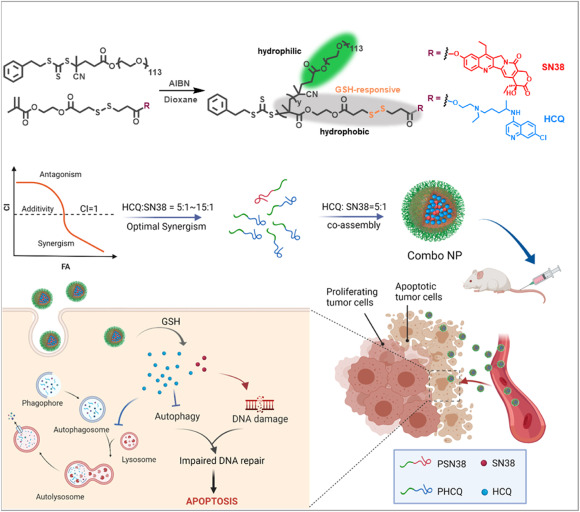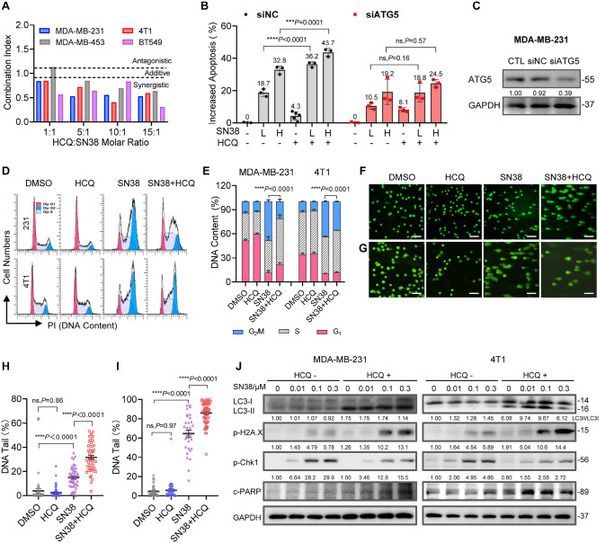Effectivecombination therapies are urgently needed to treat triple-negative breastcancer (TNBC), which is insensitive to the existing treatment regimens.However, the synergistic potency of traditional small-molecule combinations islimited mainly due to mismatched molar ratios, inconsistent pharmacokinetics,and intratumoral accumulation of individual drugs. Current nanotechnologyoffers an unparalleled development on advanced combination drug delivery,especially ratiometric drug delivery in vivo.
Recently,Prof. LIU Xiangrui and Prof. ZHOU Tianhua from the Zhejiang University Schoolof Medicine co-published an article entitled “Nanoprodrug ratiometricallyintegrating autophagy inhibitor and genotoxic agent for treatment oftriple-negative breast cancer” in Biomaterials. This study reports aglutathione-responsive self-assembled Combo NP ratiometrically co-deliveringhydroxychloroquine (HCQ) and 7-ethyl-10-hydroxycamptothecin (SN38) forsynergistic therapy of metastatic TNBC (Figure 1).

Figure1. Schematic illustration of Combo NP ratiometrically integrating HCQ and SN38.
InApril 2020, a SN38-based antibody-drug conjugate (Sacituzumab Govitecan) wasapproved by FDA for the treatment of metastatic TNBC patients. SN38 is a potenttopoisomerase I (TOP1) inhibitor, which induces DNA single- or double-strandbreaks during DNA replication. Growing evidence suggests that autophagy(“self-eating”) plays important roles in maintaining genomic stability andregulating the DNA repair. The study found that the autophagy inhibitor HCQenhanced tumor cell responsed to SN38 through impairing DNA damage repair, andobtained the range of synergistic HCQ/SN38 molar ratios in TNBC cells (Figure2).

Figure2. Autophagy inhibitor HCQ sensitizes tumor cells to the genotoxic effect ofSN38
Tofurther elevate the synergictic effect, they developed a nanoprodrug strategyfor implementing the ratiometric combination of SN38 and HCQ. SN38 or HCQ waslinked to an amphiphilic polymer through a disulfide bond, which will bespecifically cleavable under endogenous high levels of GSH in tumor cells torelease parent drugs, thus avoiding indiscriminate release in normal tissues. Thetwo polymeric prodrugs were ratiometrically co-assembled into nanoparticlesCombo NP at the optimized synergistic molar ratio. The Combo NP not onlysignificantly improves the pharmacokinetics and tumor distribution of bothdrugs, but also achieves the designed ratiometric delivery, resulting insuperior antitumor activity versus the free drug combination regimen inmetastatic TNBC mice.
Thisstudy focuses on the rationale and synergistic mechanisms investigation of agenotoxic agent SN38 and an autophagy inhibitor HCQ, in parallel, provides apolymeric prodrug-based co-delivery paradigm to overcome the drawbacks oftraditional small-molecule drug combinations, thereby yielding enhancedanti-tumor potency for TBNC treatment.












